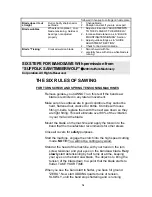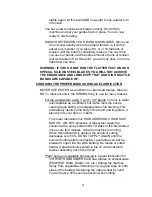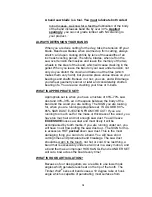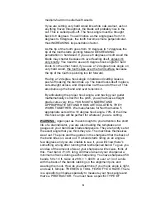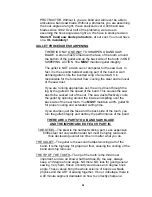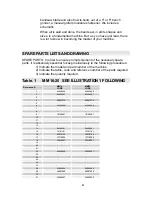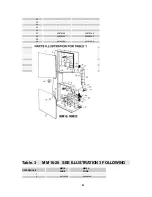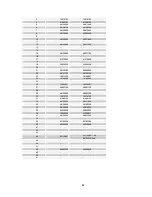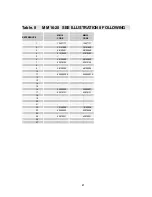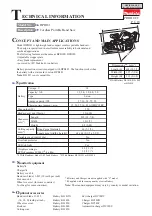
12
ADJUSTMENTS TO THE PLANE OF THE WHEELS
Coplanar in Bandsaw terms means that the upper and lower wheel
faces are in exactly the same plane . This state keeps the blade well supported
for accurate sawing and blade tracking. There are differences of opinion as to
whether a flat wheeled saw such as the MiniMax MM16 and MM20 really needs
to be coplanar. Nevertheless, the following routine will indicate whether your
wheels are in the same plane and will present instructions for achieving this
advanced state.
Wheels are adjusted to the same plane at the factory using the
appropriate settings for a 1 ¼” blade. This may not necessarily mean that the
wheels will be coplanar for smaller width blades. The reality is that when smaller
blades (ie 1/2") are used, the blade may not track exactly the same on both the
upper and lower wheels. This is normal and perfectly okay as long as the back of
the blade remains square to the table. If it is not square to the table, the following
adjustments will help whether you are aiming for a coplanar condition or not.
STEPS TO ADJUST THE PLANES OF THE WHEEL (COPLANAR)
1) Prepare a 3/4" plywood template approximately 10" wide, by 67" long with one
edge perfectly straight
2) Cut an arc out of the template to bypass table, (or remove table). Cut notches
as needed to bypass the wheel hubs and the saw frame.
3) With your widest blade on and fully tensioned hold the template against the
face of the upper and lower wheels. If the wheels are coplanar, the straight edge
of the plywood template will be in contact with the top and bottom of each wheel.
4) If there is a gap on either the top or bottom on the lower wheel, then the plane
of the wheel needs adjustment.
5) On lower wheel hub on outside of frame, loosen center bolt, loosen lock nuts
on the appropriate bolts to adjust (usually top and bottom at “6 and 12 o’clock)
( See Section on wheel adjustment above and See Figure25 Lower Wheel
Adjustment), adjust wheel into coplanar
by
loosening one and tightening the other
in order to tilt the wheel in the desired
direction.
6) Reheck with template; tighten
locknuts and center hub bolt;
7) Stabilize blade by spinning the
wheels by hand. This will indicate how
the blade will track and thus position
the blade to check for not only the
same planes for both wheels but the
squareness of the blade back to the
table.
Содержание MM 16
Страница 25: ...24 ...
Страница 27: ...26 ...
Страница 29: ...28 ...
Страница 32: ...31 ...
Страница 33: ...32 NOTE THAT PARTS WITHOUT A CODE ARE NORMALLY STOCK FASTENERS OR WASHERS ETC ...

















